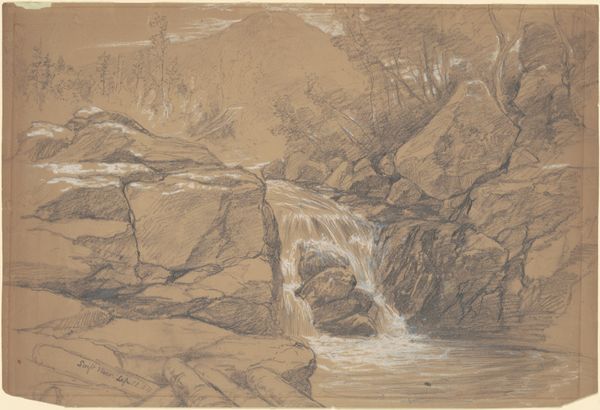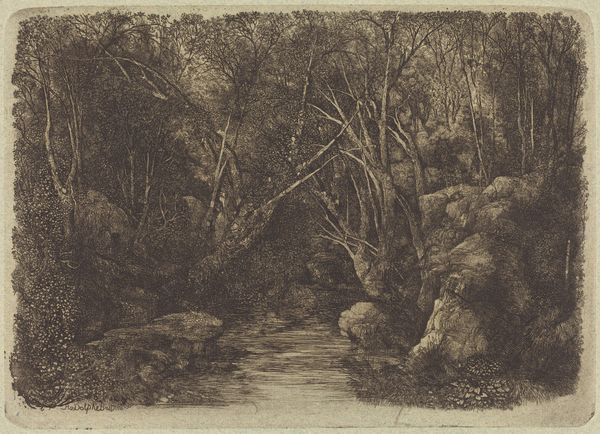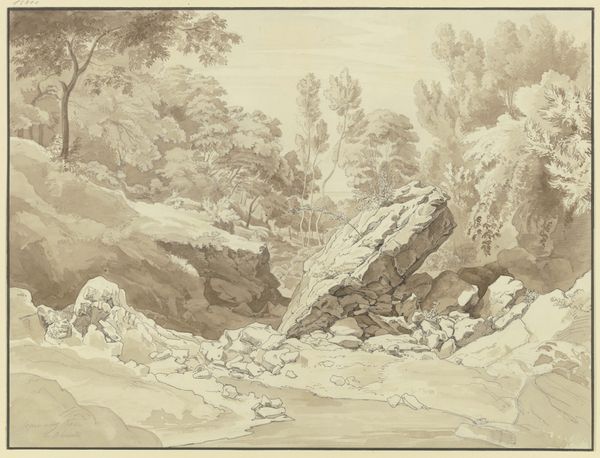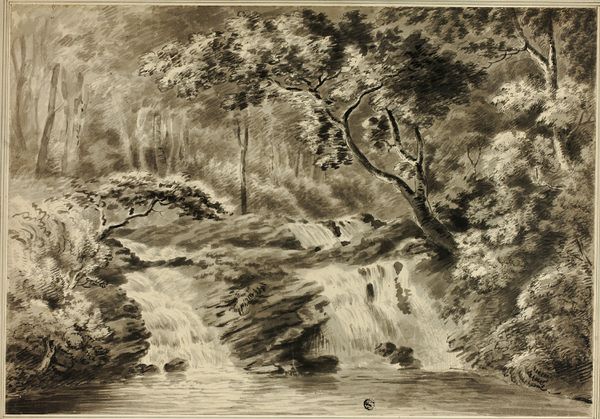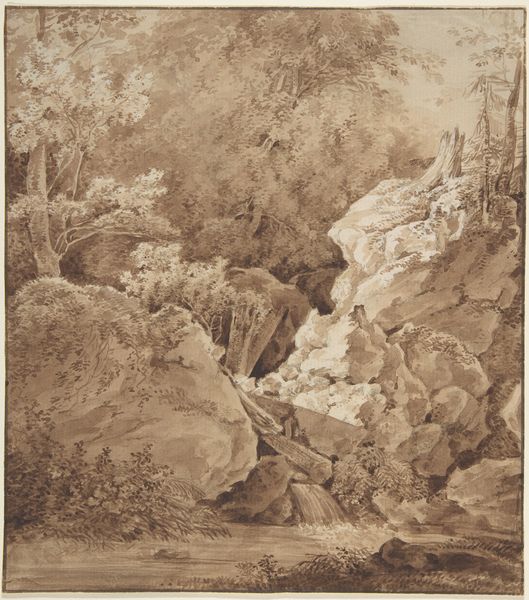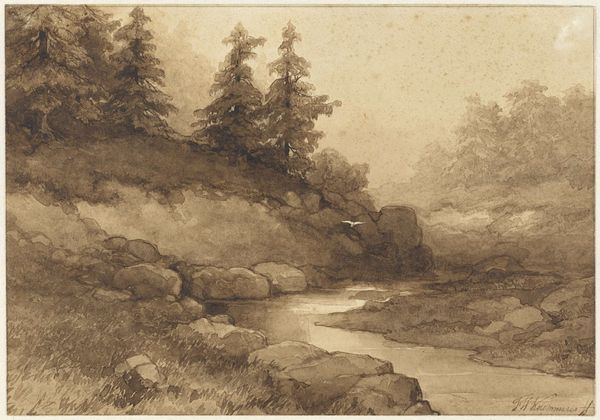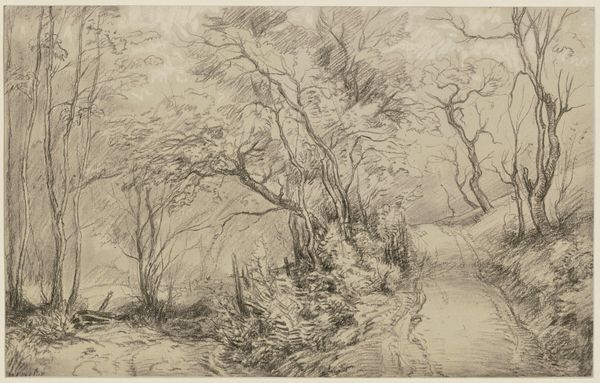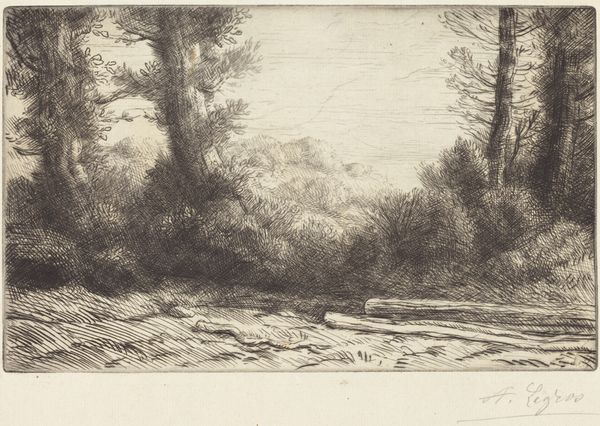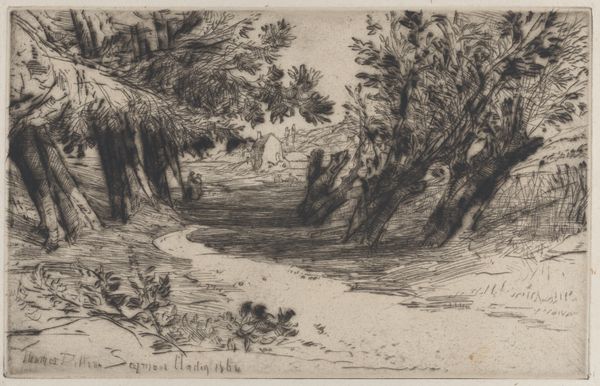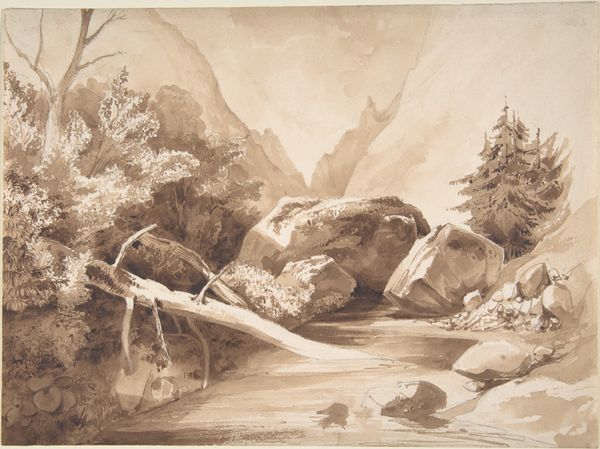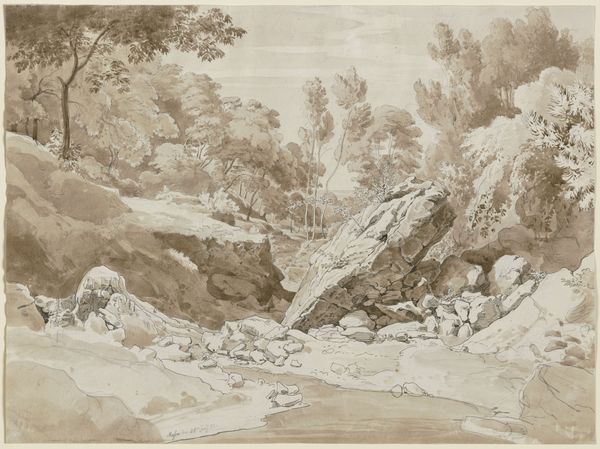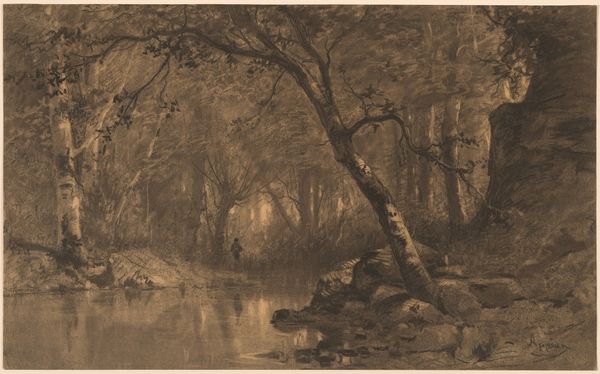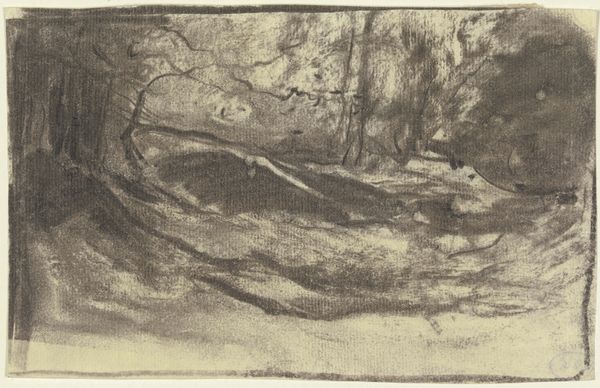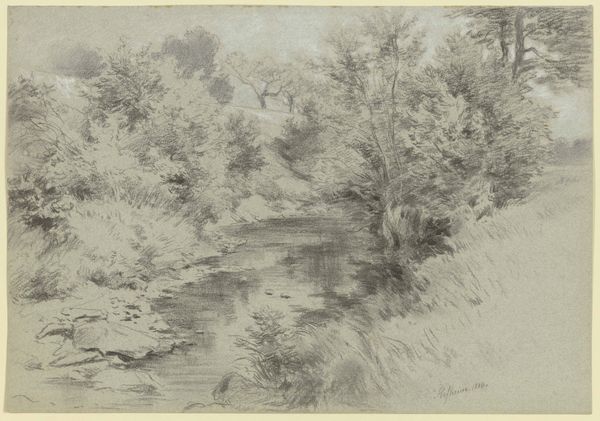
Copyright: Public Domain
Curator: This is Adolf Hoeffler’s "Chauderon near Glion," created between 1884 and 1886. He worked in chalk and pastel to bring this scene to life. It's currently held here at the Städel Museum. Editor: Immediately, I'm struck by the moody atmosphere. The contrast of light and dark creates a dramatic, almost unsettling feel. It's not quite serene, is it? Curator: Well, I think if we delve into the context of 19th-century landscape art, especially within Romanticism, this wouldn't be so unusual. Look at the ways Hoeffler uses humble materials. Chalk and pastel were relatively inexpensive, available. It suggests a democratization of artmaking itself, challenging academic oil painting norms. Editor: That's fascinating. I see a commentary, perhaps unintended, on access and privilege embedded in the very act of its creation. Was this accessible to everyday individuals in ways traditional art making wasn’t? How did the economics of materials influence the broader art world at that moment? Curator: Exactly! Moreover, think about the labour. Chalk and pastel require a directness of touch, less reliance on studio assistants perhaps. There's a palpable sense of the artist's hand. One person creating art from easily available items. Editor: And it encourages us to consider who typically painted and had ownership of images during that era. How the scene reflects the political and industrial backdrop is essential. Who has time to stand here observing beauty? This could evoke rural anxieties surrounding displacement in light of growing industry. The dark, tangled forest could reflect internal feelings connected to a rapidly changing external landscape. Curator: An interesting parallel. The swift water rushing and crashing could mirror industrialization—the quick changes. What this work then becomes is an illustration and encapsulation of the fears around it all. Editor: It is remarkable how layers of history and labour are interwoven through even simple mediums like chalk and pastel. It really pushes the notion of what high art even means when placed beside paintings of similar eras created from wealth. Curator: A worthwhile contemplation, especially today as we reckon with what access truly means in our spaces. Editor: Precisely. Thanks to Hoeffler, perhaps, for unintentionally initiating that discussion and challenging the traditional definitions.
Comments
No comments
Be the first to comment and join the conversation on the ultimate creative platform.
